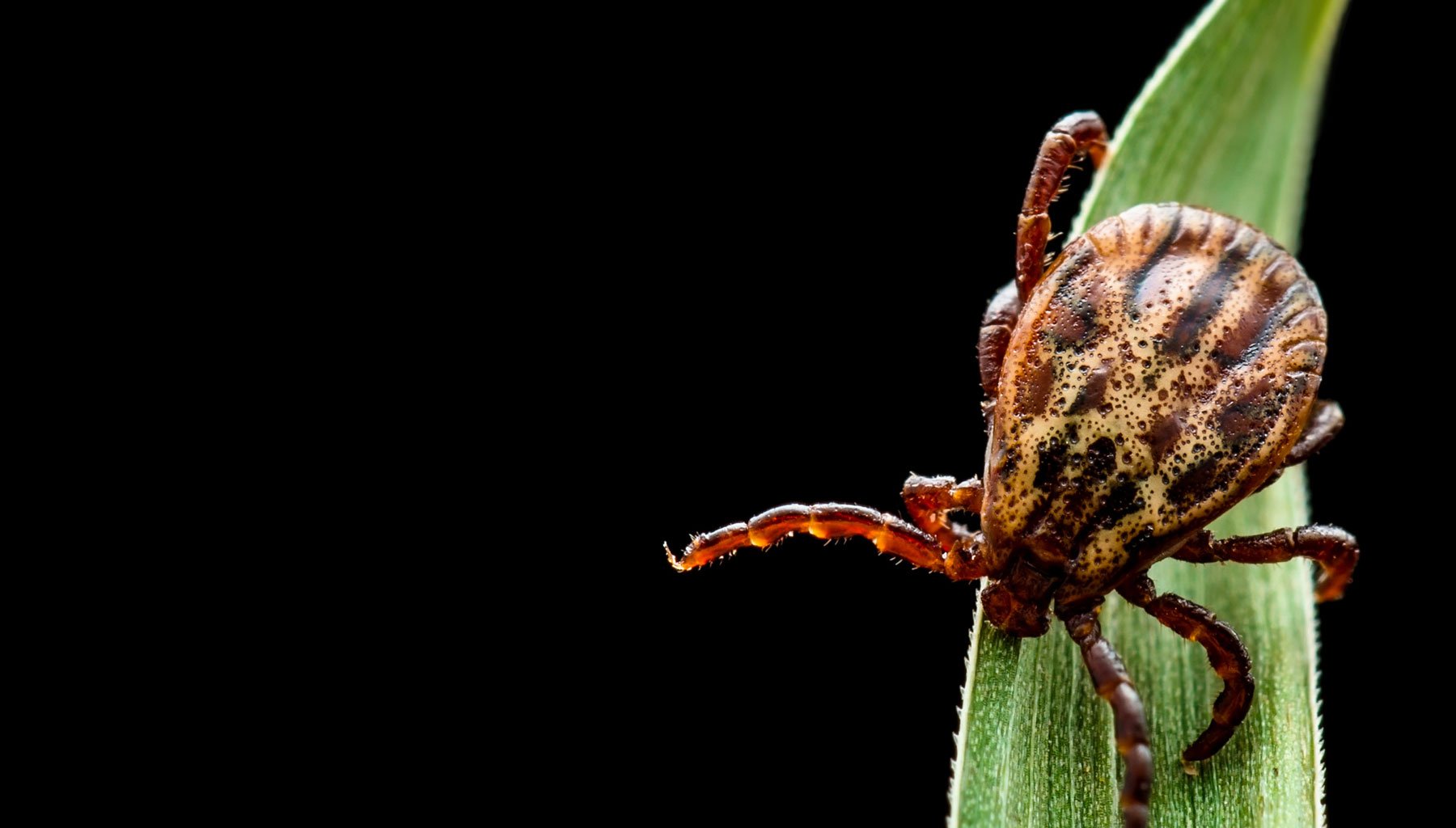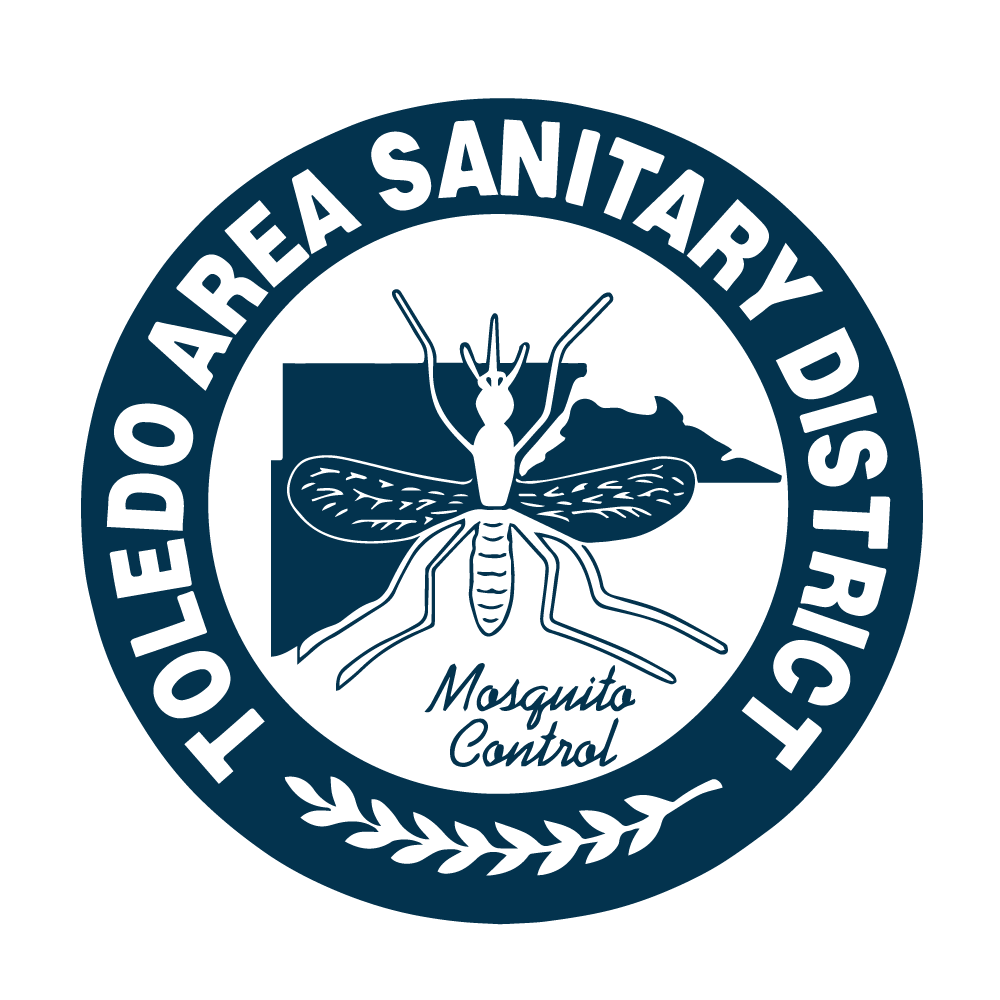
TICKS AND
PROTECTING YOURSELF
TASD currently does not provide tick control services. Rather, TASD’s mission is to provide education about tick checks, tick removal, and habitat management. It is important to note that early detection and removal of a tick can reduce your risk of disease.
The Lucas County TickTracker program through TASD allows Lucas County residents to become more involved in tick surveillance efforts by submitting ticks they have found for potential identification and testing. If you have found a tick in your area, please submit information about the tick problem via TASD’s Report a Tick web app.
-
Mosquitoes and ticks are both biting arthropods (invertebrates with an exoskeleton, body segments, and jointed legs). They both feed on the blood of their host and can transmit diseases. However, these organisms have some important differences that affect their control.
Ohio has three tick species that commonly feed on humans: the American dog tick, the Lonestar tick, and the Blacklegged (deer) tick. Each of these species has the potential to transmit diseases to humans (or pets). The black-legged tick (Ixodes scapularis) is capable of spreading Lyme disease, the most common tick-borne illness in the United States. The tick species found in Ohio have four life stages: egg, larva, nymph, and adult. The larval and nymphal stages are small, often going undetected on people.
-
Unlike mosquitoes, male and female larvae, nymphs, and adult ticks require a bloodmeal. Following the bloodmeal, larvae and nymphs release from their host and molt before finding another host. Due to the use of multiple individuals as hosts, ticks have multiple opportunities to spread disease. Some ticks take two or three years to complete their lifecycle, overwintering in leaf litter on the ground. Overwintering blacklegged ticks can become active whenever temperatures are above freezing, making them a year-round concern. The American dog tick can wait up to 2 years for its next meal.
-
Ticks are difficult to control with chemicals. Ticks are small and do not fly. While these are simple observations, they make detecting and treating ticks a monumental task. Active, flying mosquito adults are more likely to encounter chemical treatments. Ticks, on the other hand, have a very localized distribution; they may be under a single bench at a park.
Ideal tick habitat depends on tick species. The American dog tick prefers grassy fields with minimal tree canopy overhead. The Lonestar and Blacklegged tick prefer wooded areas, especially those with dense undergrowth. The hosts of these species, such as deer and mice, prefer similar habitats. By reducing host and tick habitats, we can reduce tick exposure.
To maintain a low-risk yard, you should keep your grass mowed, shrubs trimmed, and leaf litter picked up. Place woodpiles away from the home and any high-traffic areas. Some elements of your landscape cannot be easily modified, but you can create areas that are undesirable for ticks. If you live near a wooded area, making a 3-foot-wide barrier of woodchips or gravel will deter ticks from migrating to the yard. Playgrounds, patios, and seating areas should be placed an additional three feet from this barrier.
-
Tick surveillance is labor-intensive; it depends on tick life stage, tick species, and even tick habitat. Most trapping methods require a person to drag fabric along walkways, stopping to check for ticks every 50-100 feet. Walking our county every week to detect ticks isn’t practical, meaning effective tick surveillance relies on citizen scientists.
You can contribute to tick surveillance!
Every time you (or your pets) walk a trail or encounter other tick habitats, you are doing tick surveillance. If you find a tick, you can submit the location and a picture of your tick to TASD (see our Report a Tick app). TASD will use this information to determine specific areas of concern and share this information with the Ohio Department of Health as well as area land managers. Citizen surveillance is a proven method of providing important data on invasive tick species. In New Jersey, a concerned citizen discovered the Longhorned ticks while shearing her sheep. By bringing this discovery to her local health division, action was taken to prevent a widespread outbreak.
-
You can prevent tick bites by applying EPA and CDC-approved repellents to clothing and exposed skin as directed. The EPA’s Repellent Finder is a useful tool for determining the best active ingredients for your situation.
Additionally, you should wear field appropriate clothing when in tick habitats. Light colors are less attractive to ticks and they make spotting ticks easier. Tucking pant legs into rubber boots or socks can prevent ticks from accessing your skin. Likewise, you should tuck your shirt into your pants.
Perform a tick check and shower shortly after being in tick habitat. Be sure to check any creased skin such as behind the knee, behind the ear, and in the belly button as these areas are particularly attractive to ticks.
-
Ticks can feed on you for hours or days. Long-term feeding means that ticks must combat our immune system. Ticks produce chemicals that reduce our immune response, but this inhibition takes time. As a tick feeds, you can become more susceptible to tick-borne disease. Early removal of a tick can prevent disease!
For Lyme disease, the transmission may require anywhere from 4-48 hours of tick attachment. It is suggested that you perform a thorough tick check and shower within 2 hours after being in a high-risk tick habitat. Don’t wait for the tick to release or die. Waiting for a tick to release on its own/die gives more time for disease transmission. Therefore, applying petroleum jelly, nail polish, or other substances to a tick is NOT a suggested method for tick removal. Don’t crush or burn the tick. These methods of tick removal risk breaking your skin or bursting the tick. By opening your skin or the tick, you increase your risk of encountering pathogens that the tick may be carrying.
Do remove the tick with tweezers. Grasp the tick with the tweezers as close to the skin as possible. Pull the tick slowly and evenly out of the skin. When removing the tick, pull it straight out; do not twist or wiggle the tick to remove it. Then, clean your hands and the bite with soap and water. Finally, sterilize the bite with rubbing alcohol.
WHAT YOU CAN DO
Reduce tick habitat
Wear EPA and CDC-approved tick repellent
Wear appropriate clothing in high-risk habitats
Do a thorough tick check after being outside
Properly remove your tick promptly
Report a Tick in Lucas County for identification




